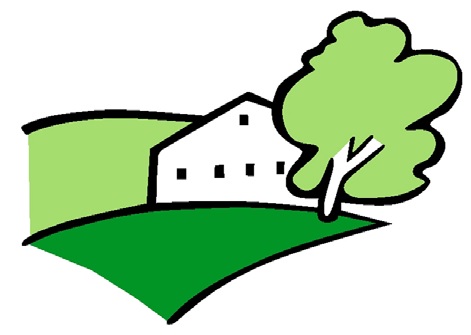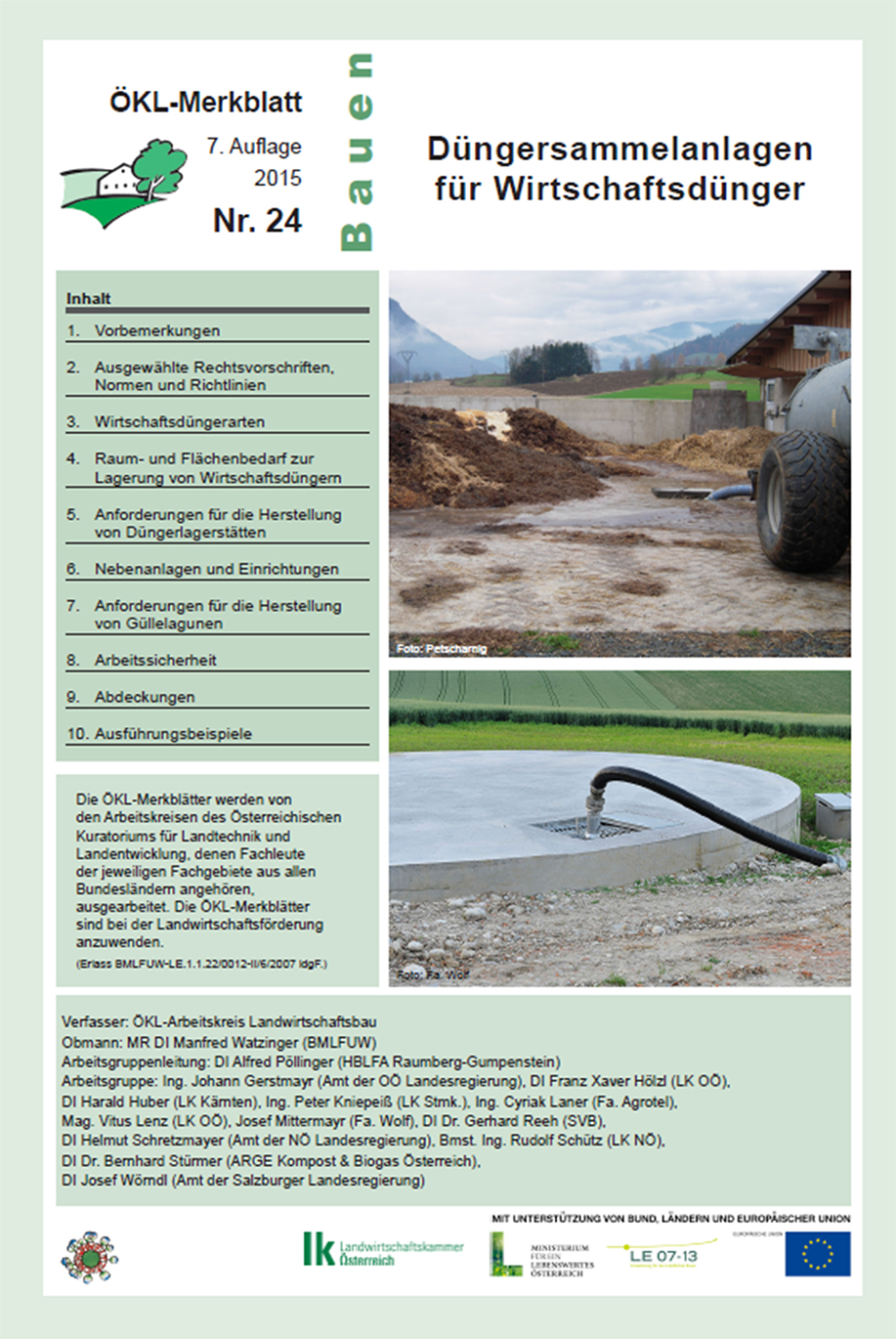18/01/2024
Fertilizer collection systems

Price: 9,00 Euro
Orders at ÖKL at 01/5051891, [email protected] or in the webshop
Leaflet 24 "Fertilizer collection systems for farmyard manure"
The 7th edition of the ÖKL (Austrian Association of Agricultural Waste Management) Guideline 24 "Fertilizer Collection Facilities for Farm Manure" contains important information on the structural design of farm manure collection facilities and on how to avoid risks to life and health, water bodies, and soil. In particular, the guideline outlines structural and technical options for storage room covers.
Farmyard manure contains valuable plant nutrients that are returned to the soil. To ensure optimal utilization of nutrients by crops and to protect the environment, proper collection of animal excrement and the resulting leachate is essential.
The use of farmyard manure in appropriate quantities at appropriate times for crop production ensures maximum environmental protection and the highest effectiveness of the nutrients it contains. Therefore, ensuring adequate storage capacity must be a key concern for every farmer. Adequate storage capacity also makes economic sense, as fewer farm-derived nutrients are lost and do not need to be replaced with expensive mineral fertilizers.
However, the method of manure storage depends not only on the client's wishes. Local conditions, construction costs, and approval-related framework conditions (building permit, funding) must also be taken into account in the decision.
In particular, open fertilizer storage areas with no floating cover are increasingly in the spotlight of public interest due to the increased release of ammonia. For example, in particulate matter remediation areas, an appropriate form of storage cover may be required (secondary particulate matter formation due to ammonia).
Contents
- Preliminary remarks
- Selected legislation, standards and guidelines
- Types of farmyard manure
- Space and area requirements for the storage of farmyard manure
- Production of fertilizer deposits
- Ancillary facilities and equipment
- Construction of slurry lagoons
- Occupational safety
- Covers
- Examples of implementation

writer: ÖKL-Arbeitskreis Landwirtschaftsbau
Chairman: MR DI Manfred Watzinger (BMLFUW)
Working group leader: DI Alfred Pöllinger (HBLFA Raumberg-Gumpenstein)
Working group: Ing. Johann Gerstmayr (Amt der OÖ Landesregierung), DI Franz Xaver Hölzl (LK OÖ), DI Harald Huber (LK Kärnten), Ing. Peter Kniepeiß (LK Stmk.), Ing. Cyriak Laner (Fa. Agrotel), Mag. Vitus Lenz (LK OÖ), Josef Mittermayr (Fa. Wolf), DI Dr. Gerhard Reeh (SVB), DI Helmut Schretzmayer (Amt der NÖ Landesregierung), Bmst. Ing. Rudolf Schütz (LK NÖ), DI Dr. Bernhard Stürmer (ARGE Kompost & Biogas Österreich), DI Josef Wörndl (Amt der Salzburger Landesregierung)
